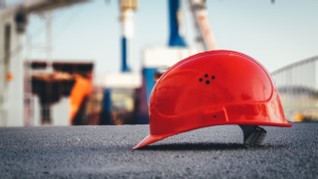Year: 2022
California Incentives for Women in Construction
Posted on October 27, 2022 in Uncategorized

Women have been underrepresented in various career fields over the decades, and construction is no exception. There have been efforts to fix this issue by providing benefits that help women who’d like to pursue a career in this field.
Anton Kalafati of B Side Construction discusses how the California Incentives for Construction Jobs program is trying to fix this issue. Equally important, why are women wanting to pursue a career in this trade?
Many Women Are Sole Household Providers
Today, more women act as heads of the household than ever before. According to The Annie E. Casey Foundation, about 15 million children live in single-mother homes in the U.S. This information reveals that more women are exclusively responsible for paying for childcare, food, utilities, and other living costs.
Gender Wage Gap
According to the Bureau of Labor Statistics, women earned 82 cents for every dollar a man earned in 2020. With the significant wage gap between the genders, many women struggle to provide for their families.
Construction Jobs Are Seen as Traditionally Male
According to the National Association of Women in Construction, females only make up about 1.5% of the entire United States workforce in construction. As an added blow, many women aren’t given fair and equal opportunities for traditionally male jobs, making it all the more difficult for them to provide for their dependents.
Gender Bias in Hiring Practices
Additionally, the potential for pregnancy and childbirth hinders women’s chances of being hired for certain positions. Many companies hesitate to hire female workers because they’re worried about employees needing maternity leave or childcare-related services.
It’s no surprise that women are underrepresented in construction, with so many challenges blocking their paths to success.

Bridging the Gap
The California Incentives for Construction Jobs program provides assistance and funding to women who desire to work in construction and related trade jobs. The goal is to bridge the gap by making it easier for these underrepresented groups to enter traditionally male occupations and careers.
Millions of dollars of funding are being used to support this initiative in 2022-2023, granting various benefits to those who are interested.
Some of the incentives that are offered include:
- Two months of pre-apprenticeship training
- Stipends to pay for living costs
- Assistance with transportation and childcare costs
- Connections for employment opportunities
How California Residents Are Responding
Many people are thankful for and taking advantage of the opportunities that the California Incentives for Construction Jobs program are giving them. With a rising demand for workers in the state of California, many individuals will have better-paying jobs to help take care of their loved ones.
Rather than importing workers from other parts of the state and country to perform the required job duties, people already in the area will have a chance to fill the needed roles.
In Conclusion
Hopefully, the California Incentives for Construction Jobs program will resolve the issue of underrepresentation and bridge the gap for women in the state. It’s already helping several residents become successful workers and making a difference in their lives.
As the initiative continues, the state hopes to see more construction-related positions filled by knowledgeable, skilled workers who participated in the program.
How Sustainable Construction Design Brings a Greener Tomorrow While Boosting Business
Posted on September 21, 2022 in Uncategorized

Thirty percent of the world’s natural resource extraction is facilitated by the construction industry. But by adopting sustainable building practices now, construction businesses can make a huge difference for their clients and the planet.
Resource efficiency and environmental responsibility are the core considerations behind sustainable construction design, building, operation, renovation, and even demolition. Generally speaking, sustainability considers the natural environment and the impact of the construction processes on it.
But in 2022, sustainable construction extends beyond the environment to community health, wealth, and social equity. And since the world is moving toward an increasingly urbanized state, Anton Kalafati of B Side Construction explains how the construction market is poised to create great change in all these areas.
Why Sustainable Construction Design is Important
Anton Kalafati urges people to “think big” when learning why sustainable construction is vital.
The construction industry and its seemingly ever-lasting outputs (i.e., the buildings) have caused most of the climate change problem. From resource extraction to material manufacturing to building operations to transportation systems, a considerable share of pollutants and climate-damaging gases are associated with the urbanized environment.
So, perhaps the question should be, “why didn’t the industry switch to sustainable construction sooner?”
The Impact of Sustainable Construction Mindsets
Historically, construction companies have focused on their own operations’ carbon footprint. But this mindset needs to change — general contractors can make a massive difference through material procurement operations.
Thankfully, the industry started this practice alteration a few years ago. These days, general contractors often measure the diesel fuel burned on a job site, and others have begun making smarter, lower-carbon material choices.

3 Sustainable Construction Methods
The well-placed urgency toward combat climate change has seen the industry fast-track many sustainable construction methods, including:
· Lean Construction
This collaborative approach to building projects involves all stakeholders working together to minimize waste and optimize proceedings.
Sustainable and lean construction both aim for efficient resource use through waste reduction. However, the latter focuses on short-term reduction, whereas the former swings more toward a long-term decrease.
Using an integrated approach lets developers save money while achieving increasingly sustainable outcomes.
· Sustainable Material Focus
With modern engineering and a deeper understanding of the natural world, companies have managed to find alternative building materials that lower carbon emissions and boost sustainability.
From bamboo structures to mass timber to mycelium to Breathe Bricks, builders are forcing suppliers to prove their products have a low environmental impact.
The green-building movement is seeping into the entire industry, so companies that want to stay ahead are shifting toward recyclable, reusable, and environmentally friendly options.
· Circular Construction
As the name suggests, circular construction implements the reduce, reuse, and recycle mantra like nobody else.
Design is central to this model. However, builders themselves can intercept materials from disposal by enacting source reduction principles, only buying recycled materials, managing their material flows, and reusing materials they already own.
Types of Concrete and How They Are Utilized in Construction
Posted on August 18, 2022 in Uncategorized

Whether exploring the streets of a big city or enjoying a stroll through the suburbs, nobody can deny the use of concrete in commercial construction. The interesting fact is, there are several different kinds of concrete used by mankind to build the modern world.
According to the Anton Kalafati of B Side Construction, there are over 20 different types of concrete used in commercial building. Most concrete types are measured by properties like durability, workability, and strength.
Below, the different types of concrete and how they are used are discussed.
Concrete Formula
Concrete is made up of a formula involving three main ingredients, listed below:
- Cement – A binding substance created from calcium, silicon, aluminum, iron, and other chemicals.
- Coarse Aggregates – An irregular material, usually granular, like gravel, crushed rock, and sand. As long as the crushed material is bigger than 0.19 inches but smaller than 1.5 inches, it can be used to mix concrete!
- Water – The liquid mixing agent that brings all of the ingredients together.
After concrete is mixed, it can be poured into a cast of limitless shapes before hardening, making it ideal for doors, staircases, columns, and other commercial building uses.

Properties of Concrete
Concrete’s properties are determined by the grade of the mixture, including how much cement and how much water are used in each. Listed below are the properties that all concrete types have in varying amounts:
- Strength
- Durability
- Workability
Anton Kalafati takes a closer look at each of these properties and which types of concrete exhibit them and how they are applied.
1. Strength
According to the American Society for Testing and Materials, the strength of concrete is usually testing by constructing a cylinder of any given type of concrete and then breaking it in a machine like the Rebound Hammer.
The strength of concrete is measured in three grades: normal, standard, and high strength.
According to Cement.org, the strongest type of concrete known currently is Ultra-High Performance Concrete. Its mixture contains limestone or flour made of quartz and takes thirty hours to cure during setup.
Because of this concrete type’s ability to carry heavy loads, it is often used for precast concrete deck panels and bridge building.
2. Durability
According to Kryton International Inc., the world’s leading tester of durability in concrete, there are several ways to ascertain how durable concrete mixtures are. A few include how permeable the concrete is when tested with water or chloride, as well as how absorbent the concrete is.
The most durable type of concrete is known as C40 and is a commercial grade mixture. 28 days after setting, C40 concrete is nearly impervious to being broken down by weather. It takes around 19 hours to cure during the setup process.
C40 concrete is used to support industrial construction in the form of beams, foundations, and roadwork.
3. Workability
Concrete is considered workable when it is fluid, easy to mix together, easily transported, and easily installed. Workable concrete is tested using “slump test,” or a measurement of how wet the concrete is. Another way to test workability in a concrete mixture is to subject it to a compact factor test, used to ascertain how well the mixture compacts after being applied.
Self-consolidating concrete is considered highly workable. It manages to flow into application sites without separating the grainy aggregation ingredient from the rest of the paste. This cement takes as little as 21 seconds to apply in setup. It is used for more delicate applications like architecture or countertops.
In Conclusion
In conclusion, the types of concrete are measured by strength, durability, and workability. The mixture of cement, water, and grainy aggregation ingredients determines these properties, allowing for a wide range of concrete applications!